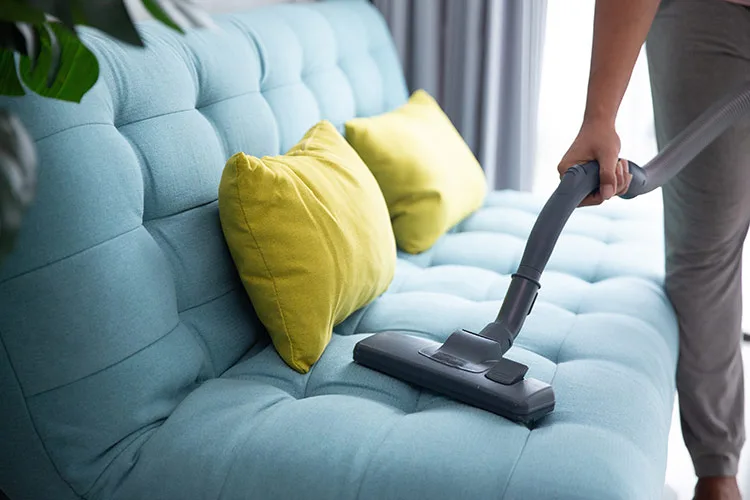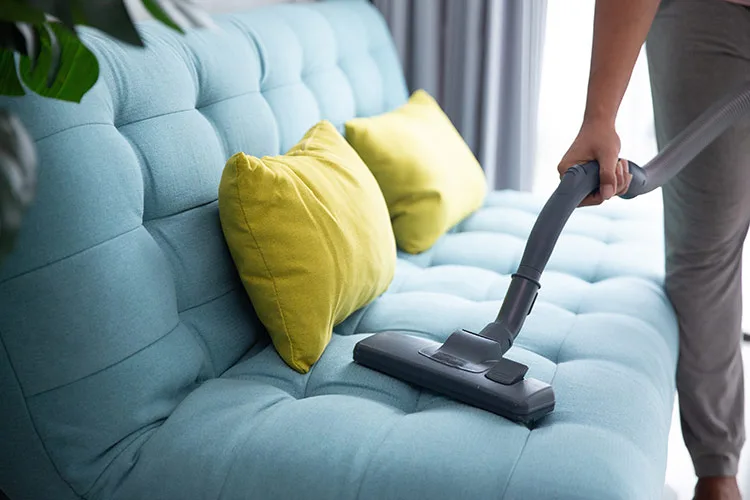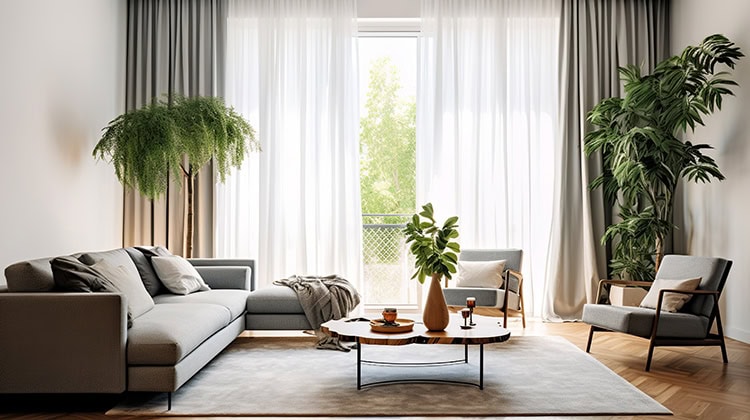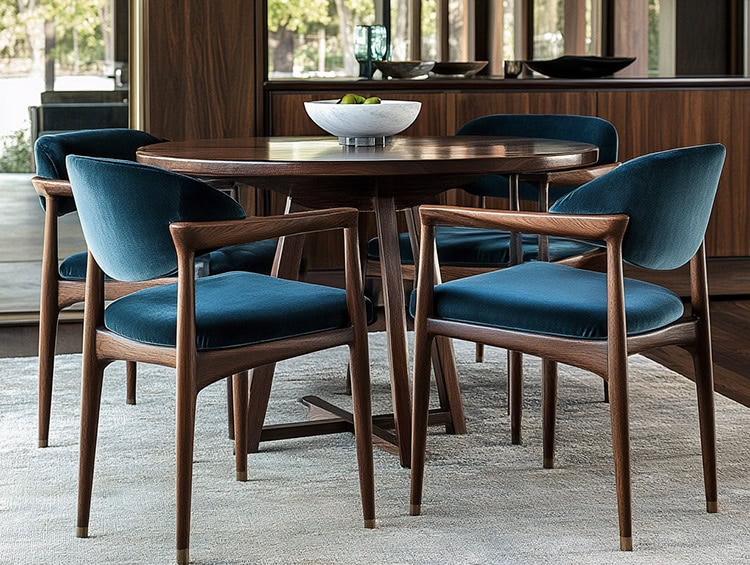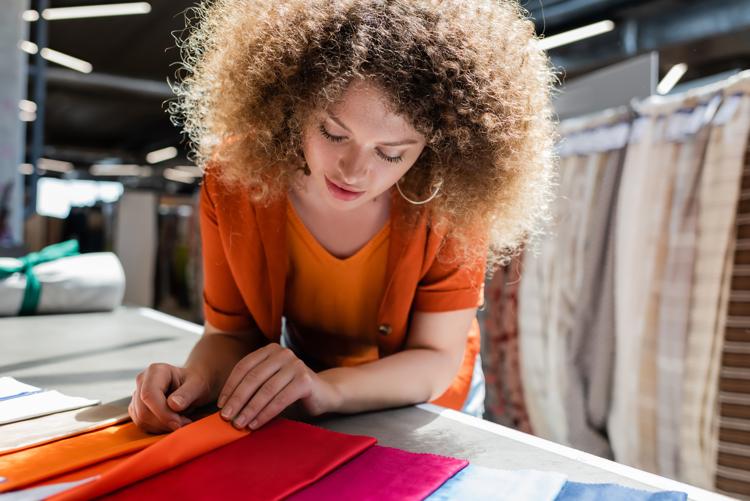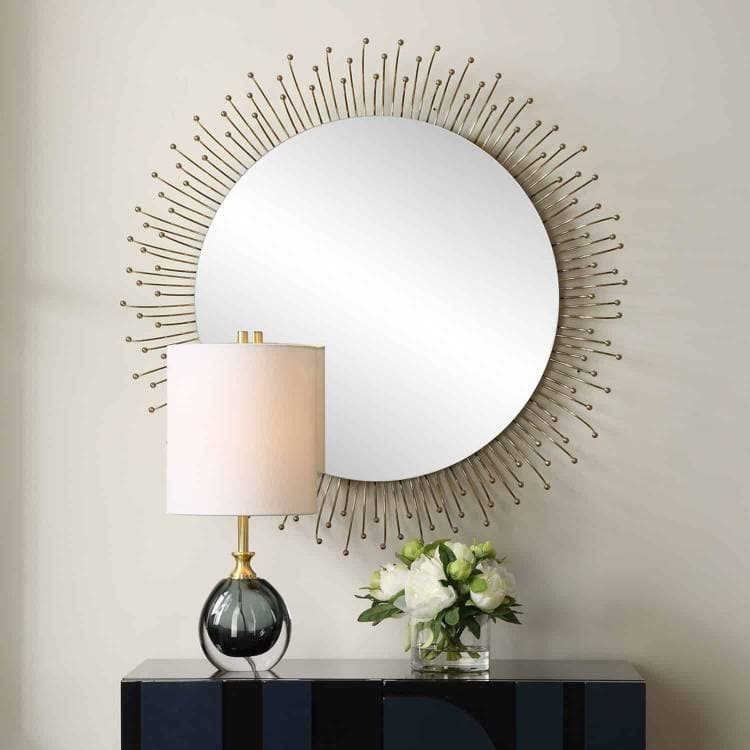We all know that furniture is a big investment, especially regarding upholstered pieces. In fact, the upholstery you choose is one of the most important decisions you can make when it comes to decorating your home. Not only does upholstery add comfort and style, but it also serves as a protective barrier from the wear and tear your furniture will face over the years. Because of this, it’s very important to take the steps needed to keep your upholstery looking its best. The better you care for it, the longer you can preserve it.
The Details of Individual Fabrics Matter
Whether you’ve purchased your furniture off a showroom floor or had specific pieces custom-made just for you, it must be taken care of properly. Keep in mind, however, that different types of fabrics will have different types of cleaning instructions — and knowing the specific composition of your upholstery fabric (e.g. wool, linen, cotton, polyester, etc) will ensure that you are taking care of it properly.
A good start is familiarizing yourself with cleaning codes, which look like this:
- S = Solvent. Use only water-free, pure cleaning solvents.
- W = Water. Use only water-based upholstery cleaning products.
- SW = Solvent or Water. Use pure cleaning solvents or water-based cleaning products.
These codes are what will help both you and a professional cleaner when the time comes to freshen your fabrics. Understanding the cleaning codes prior to purchasing upholstered pieces can also be helpful in that it brings awareness to what kind of maintenance it will require. You might realize it’s more maintenance than you’re willing to give.
General Care for All Fabrics
With that said, there are some general care tips that apply to all fabric upholstered furniture, so that’s what we’ll focus on the most. Here are some guidelines to follow so you can enjoy your fine furnishings for years to come.
Treat the fabric before you use it.
There’s something exciting about purchasing new furniture, but hold off on kicking those feet up until it’s been treated. Many retailers, but not all of them, carry furniture that has been pretreated with a stain-repellant product. If they don’t, see if they can treat it for you before the pieces are delivered. If not, you’ll need to shop for someone who can.
Take the time to rotate the cushions.
Your seat cushions benefit from being flipped and rotated just as much as your bed mattress does. By doing this, you are helping your cushions achieve consistent wear. Since cushions are thinner and usually sat upon quite frequently, aim to rotate them weekly.
Vacuum regularly.
Dust piles up everywhere, including on your furniture. When you go to vacuum your floor, take a few extra minutes to run the vacuum over the fabric of your upholstered furnishings. This will keep dirt from settling in deep, which ultimately gives you a bigger time allowance before deep cleaning is needed.
If you have leather pieces with dirt build-up, treat them with non-acidic soap and water. Blotting spots is best, but if you must rub it, do so in a side-to-side motion rather than a circular one.
Know how to handle spills and stains.
When spills happen, it’s important to act quickly. The first step is to gently blot at the spill with a clean cloth or towel. If that doesn’t remove the stain, the next step would be to use water or a solvent-based cleaner. Again, it’s important that you look at the fabric care label before doing so. Once you’ve identified the type of fabric and what cleaning solution it can handle, you can proceed with treating the stain.
Difficult stains may require more aggressive treatment. If that’s the case, consult a professional upholstery cleaner.
Guard against the elements.
Excessive heat, light, cold, and moisture can be harmful to upholstered pieces. Ultraviolet rays contribute to fading and discoloration, while humidity opens the door to mildew. If space allows, try rearranging your furniture. Fading is inevitable, but rearranging it will slow down the process, or at least make the fading more uniform. If you can’t keep furniture away from the windows, consider hanging window treatments that will block some of the light.
Treat it kindly.
Furniture isn’t indestructible and oftentimes, it takes quite a bit of a beating throughout the years. To prolong your furniture’s good condition, avoid standing or jumping on it, keep sharp objects at bay, and use arm caps to absorb natural body oils. As mentioned earlier, no fabric is indestructible. If you want to enjoy your furniture for a long time then it’s up to you to treat it well.
Cutting Corners for Discount Designer Fabrics
At Cutting Corners, we have a wide variety of discount designer fabrics for your home. This includes our beautiful line of performance fabrics. If you don’t know how wonderful these fabrics can be for your home, stop by the showroom so we can tell you! You can also learn more about performance fabrics by reading our blog Have Worry-Free Living With Our New Performance Fabrics.

